
From Victorian to Modernist: Styles of Vintage Holiday Cards
Summary
We explore the evolution of holiday card designs, from Victorian elegance to Modernist simplicity. By examining how artistic movements and cultural shifts shaped these festive greetings, we uncover the stories behind their timeless charm and how they continue to inspire today’s creatives.
Reflection Questions
- How do the design elements of vintage holiday cards reflect the cultural values of their respective eras?
- In what ways have technological advancements influenced the evolution of holiday card designs?
- How can understanding the history of holiday card designs inspire contemporary creative projects?
Journal Prompt
Reflect on a vintage holiday card that resonates with you. What elements of its design appeal to you, and how do they reflect the era it represents? How can these design principles inspire your own creative work today?
Welcome to the enchanting world of vintage Christmas cards. These delicately crafted treasures are more than mere paper and ink. They are portals to eras filled with fun, charm, sophistication, and a touch of nostalgia that defines the holiday season. In some cases, these vintage Christmas cards are symbols of hope and optimism during difficult periods. From the very first card designed by J.C. Horsley to the Modernist illustrations of the 1930s, let’s journey through time to study the styles of vintage Christmas cards that preceded those we send today.
The Early Beginnings
Victorian Era Elegance
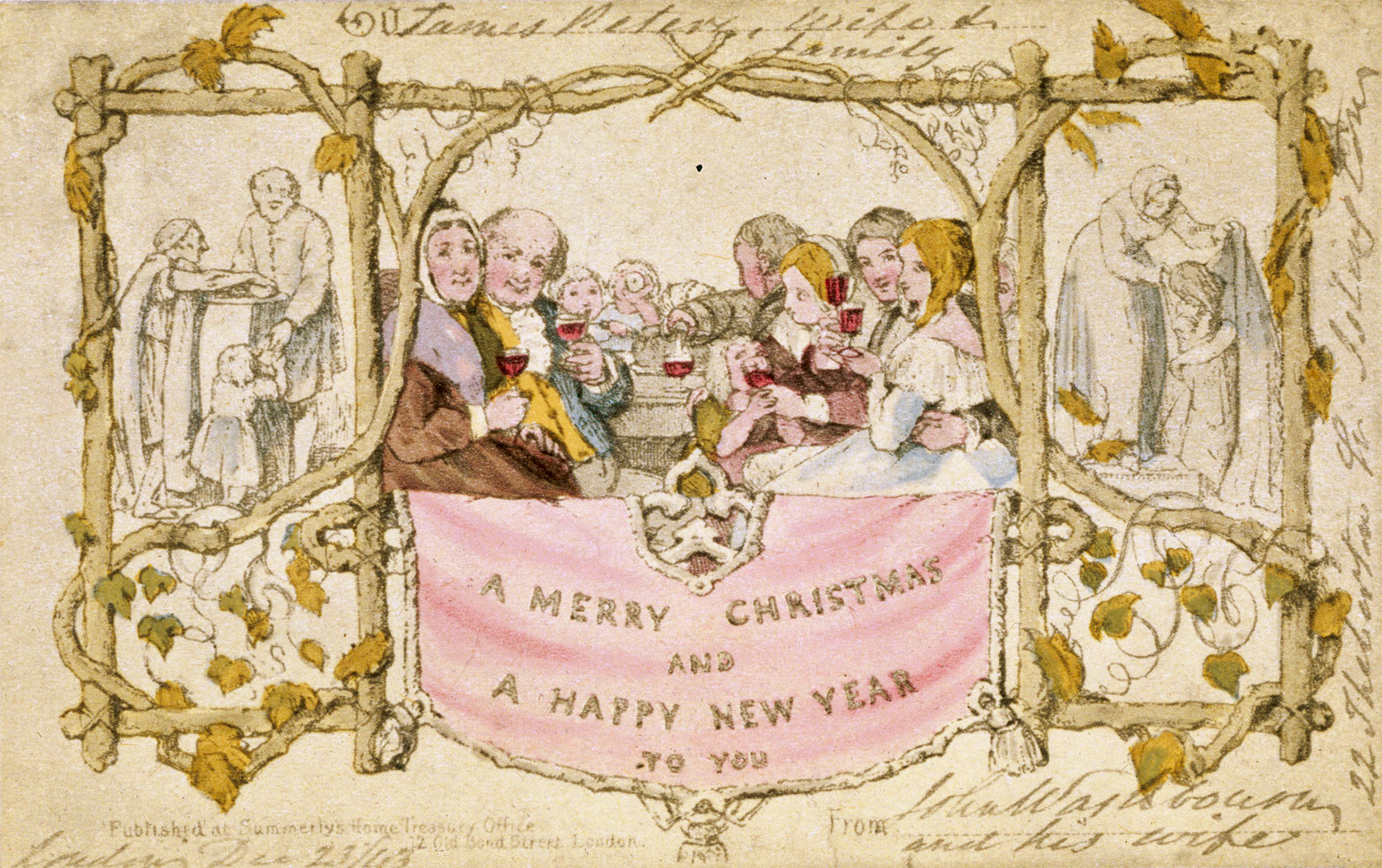
The inception of the Victorian Christmas card in the mid-19th century—marked by J.C. Horsley’s illustration in 1843—laid the foundation for a cultural phenomenon that transcended mere festive greetings. These vintage Christmas cards or early cards—lithographed and hand-colored—boasted intricate designs that mirrored the ornate sensibilities of the Victorian era. Delicate illustrations, meticulous detailing, and elaborate typography transformed each card into a miniature work of art.
Religious motifs took center stage on Victorian Christmas cards—with nativity scenes and angels adorning the visuals. These depictions served as visual hymns—emphasizing the profound spiritual significance of the holiday season. The integration of religious symbolism added depth and meaning to the festive greetings.
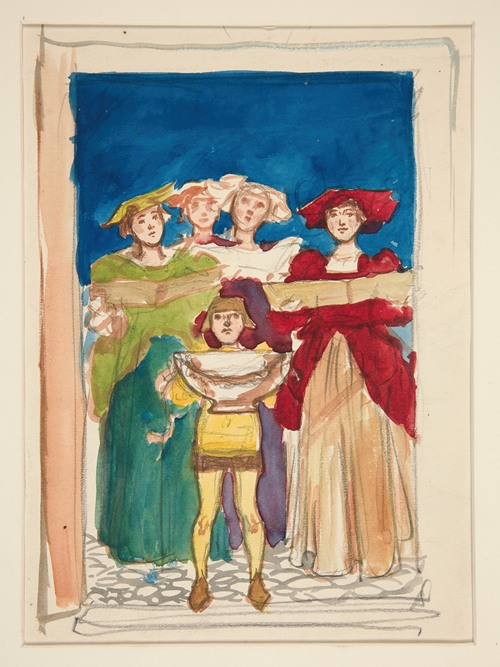
Elaborate typography became a hallmark of Victorian Christmas cards—with calligraphic scripts intertwined with decorative elements. The typography itself became an expressive component—reflecting the meticulous craftsmanship of the era.
Technological advancements and shifting societal norms shaped the social and cultural context of holiday card-giving during the Victorian period. The introduction of color printing techniques and the Penny-Post facilitated mass production—making these Vintage Christmas cards more accessible. Beyond simple greetings, these cards became tangible expressions of Victorian sentiments—symbolizing shared joy and goodwill within a society that highly valued tradition and social connection.
The Victorian Christmas card encapsulated the artistic and cultural ethos of the era—weaving together tradition and the possibilities of a changing world.
Early 20th Century Innovations
Art Nouveau Influence
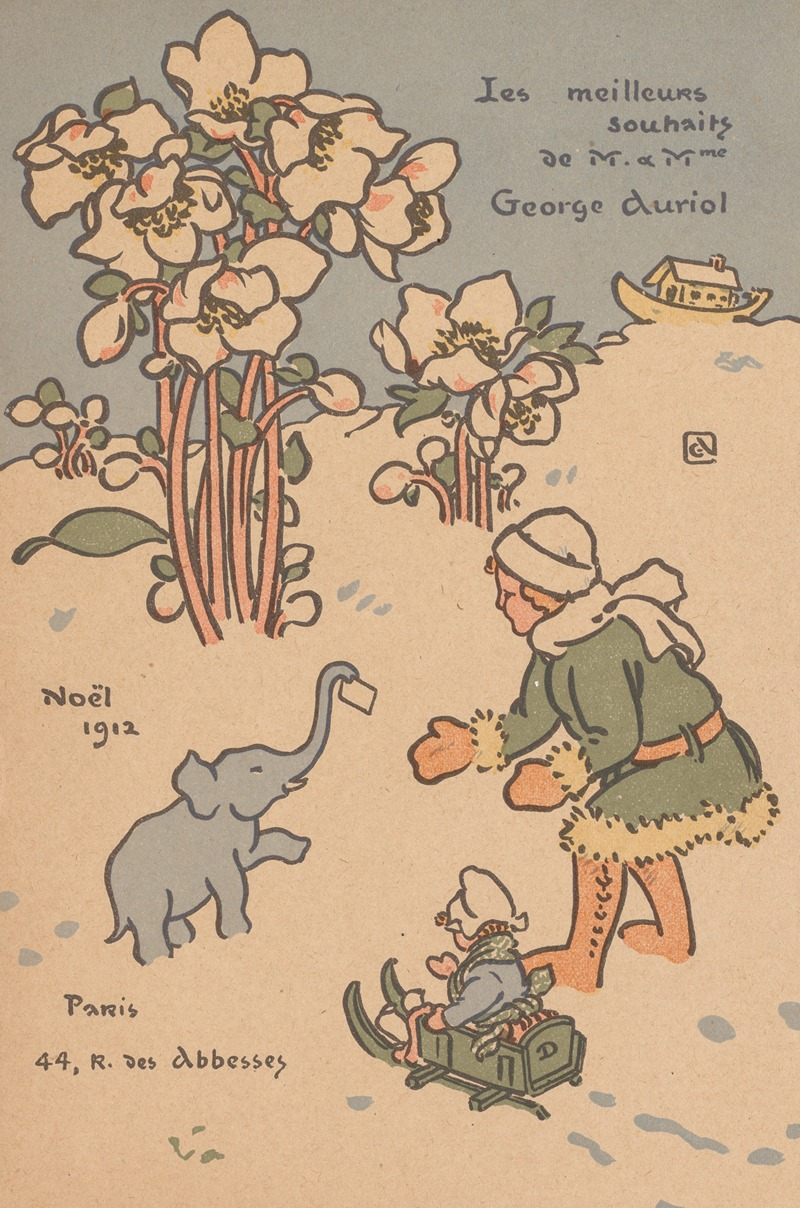
Vintage Christmas cards adorned with Art Nouveau elements evoke an era of enchantment. The exploration of Art Nouveau within holiday cards unfolds as a tapestry of natural forms—where curved lines and ornate details intertwine. Each card becomes a canvas—showcasing the movement’s commitment to organic beauty.
Stylized leaves, twigs, and flowers grace the designs —creating an intricate dance of festive elegance. The hallmark whiplash lines and an emphasis on the female form add a touch of avant-garde flair to traditional greetings. In this convergence of artistic innovation and holiday cheer, Art Nouveau transforms each card into a masterpiece of yuletide enchantment.
The Rise of Postcard-style Cards
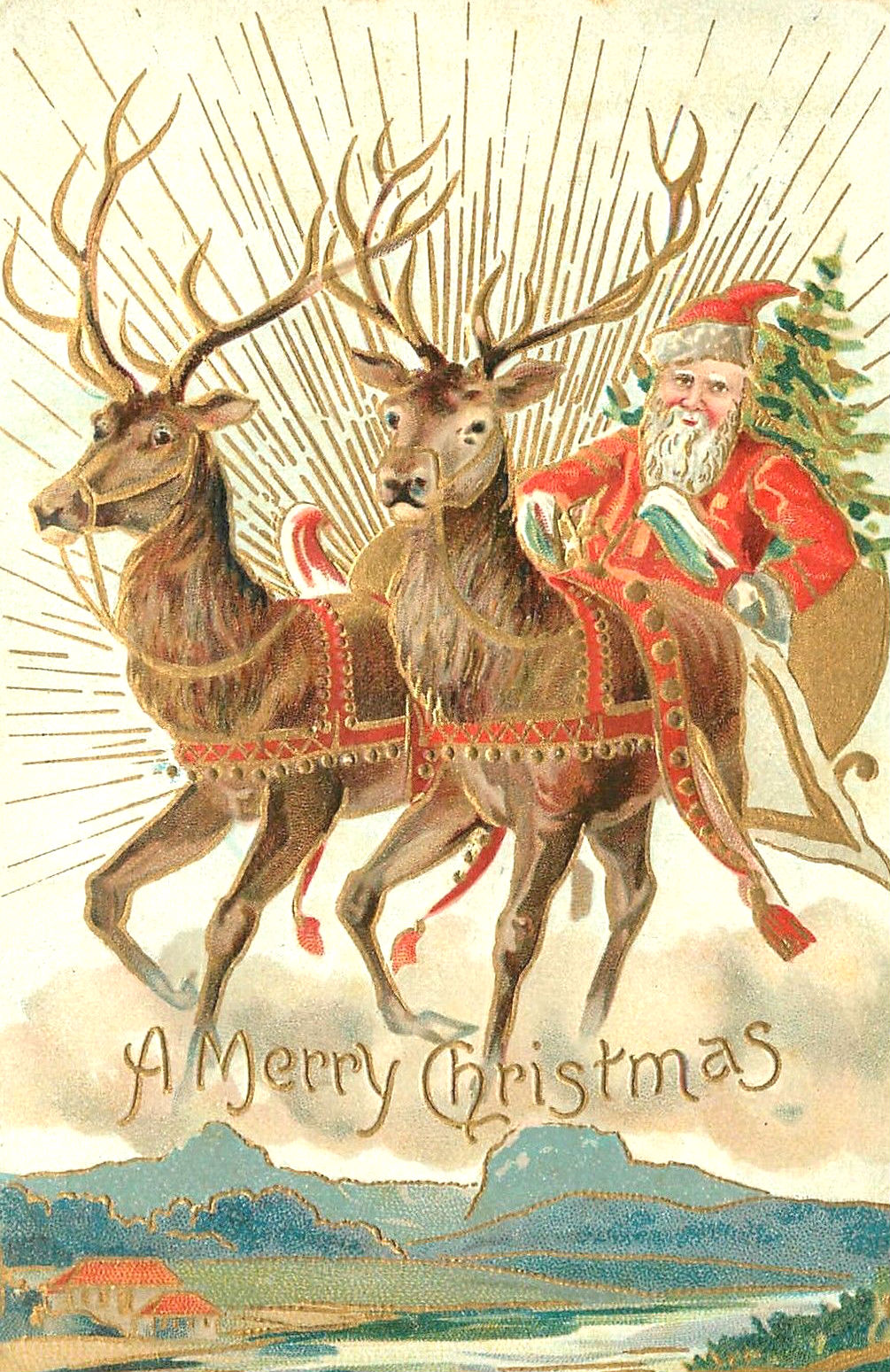
The early 20th century witnessed a transformative shift in Christmas greetings—shifting from folded cards to postcards. This shift was fueled by affordability and convenience. In 1915, Joyce Hall—a visionary postcard manufacturer—standardized the single-fold card. Her work set the stage for Hallmark’s dominance in the greeting card industry.
The compact format allowed for concise yet heartfelt messages. Cards from this time feature cozy, domestic imagery like a collie framed in holly or a cheerful child—capturing the essence of the evolving Christmas imagery during this era of transition.
The Roaring Twenties and the Great Depression
Art Deco and Modernism
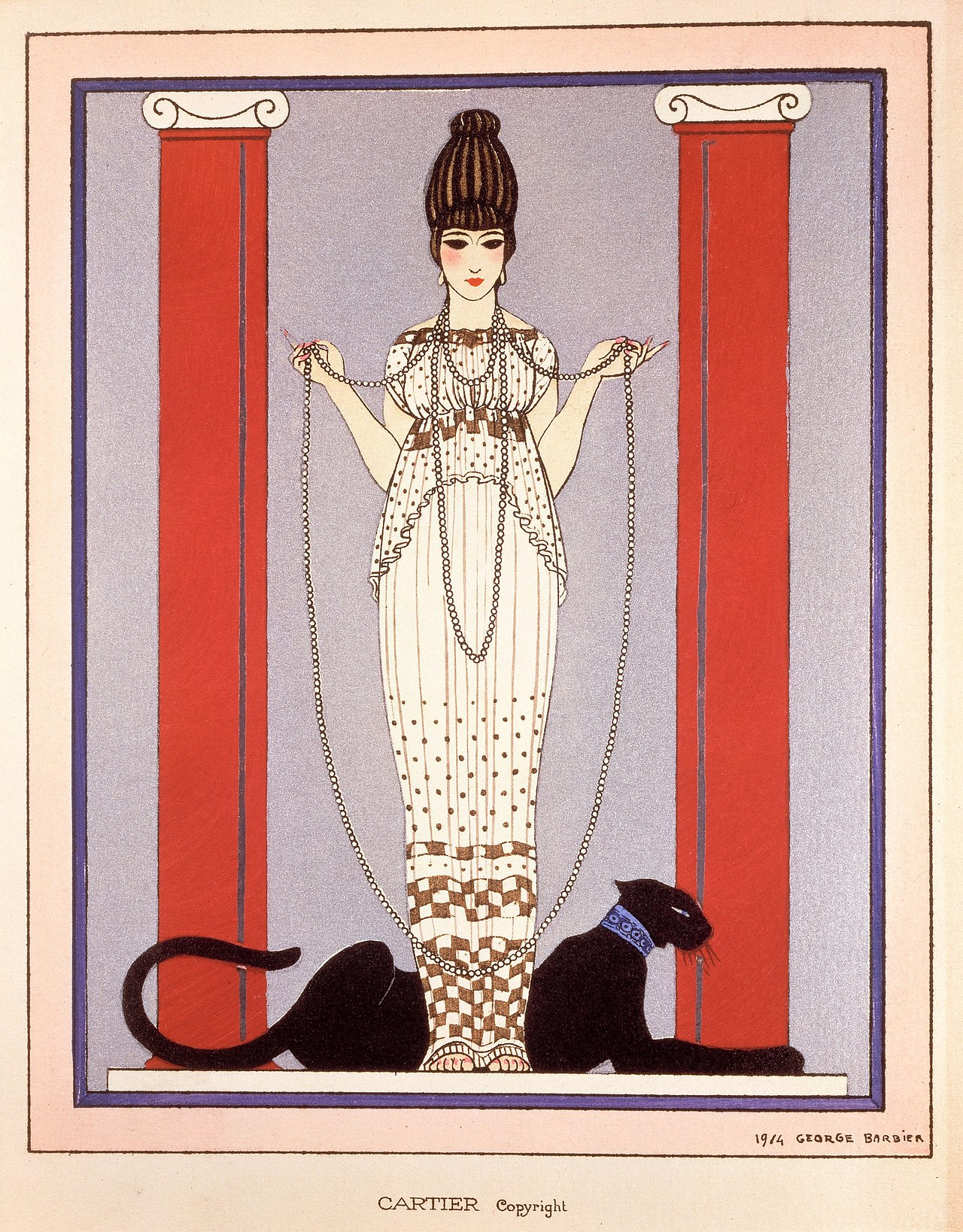
Art Deco—a defining design movement of the 1920s—significantly influenced the evolution of Christmas cards during a period marked by cultural and economic shifts. As the ‘Roaring Twenties’ unfolded, Christmas cards embraced Art Deco’s geometric shapes and bold lines—reflecting the opulence and modernity of the era.
While the above image is a display card rather than a vintage Christmas card, it demonstrates the style of this period. The intricate and lavish designs of Christmas cards during this period mirrored the broader aesthetic trends of Art Deco—incorporating elements inspired by Cubism, ancient civilizations, and diverse artistic influences.
This departure from traditional holiday card styles was emblematic of the societal changes and economic prosperity of the time—contributing to the rich tapestry of Christmas card evolution.
Sentiments and Symbolism
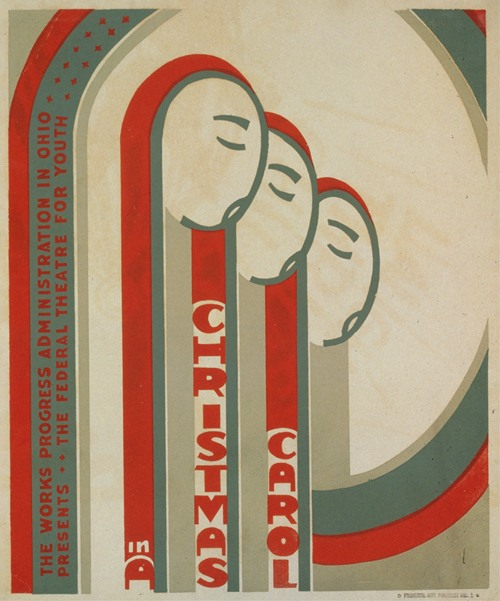
Economic and social changes of the early 20th century profoundly influenced sentiments and symbolism in Christmas card messages and designs. Lavish Art Deco designs of the prosperous 1920s gave way to the simplicity of the 1930s reflected the broader societal shifts.
Again, the card pictured above is not specifically a holiday card sent from one reveler to another. It is an advertisement for a WPA-funded play during the holidays. However, it shows the shift to more modern, streamlined aesthetics.

The Great Depression prompted another change in tone—with messages of resilience and hope. Images evolved to incorporate scenes of unity and familial warmth—resonating with a public struggling through intense economic hardship. These adaptations in Christmas card content and design exemplify how external factors shape cultural expressions—offering a glimpse into the collective sentiments of a changing society.
Mid-Century and Post-War Era
The Golden Age of Christmas Cards
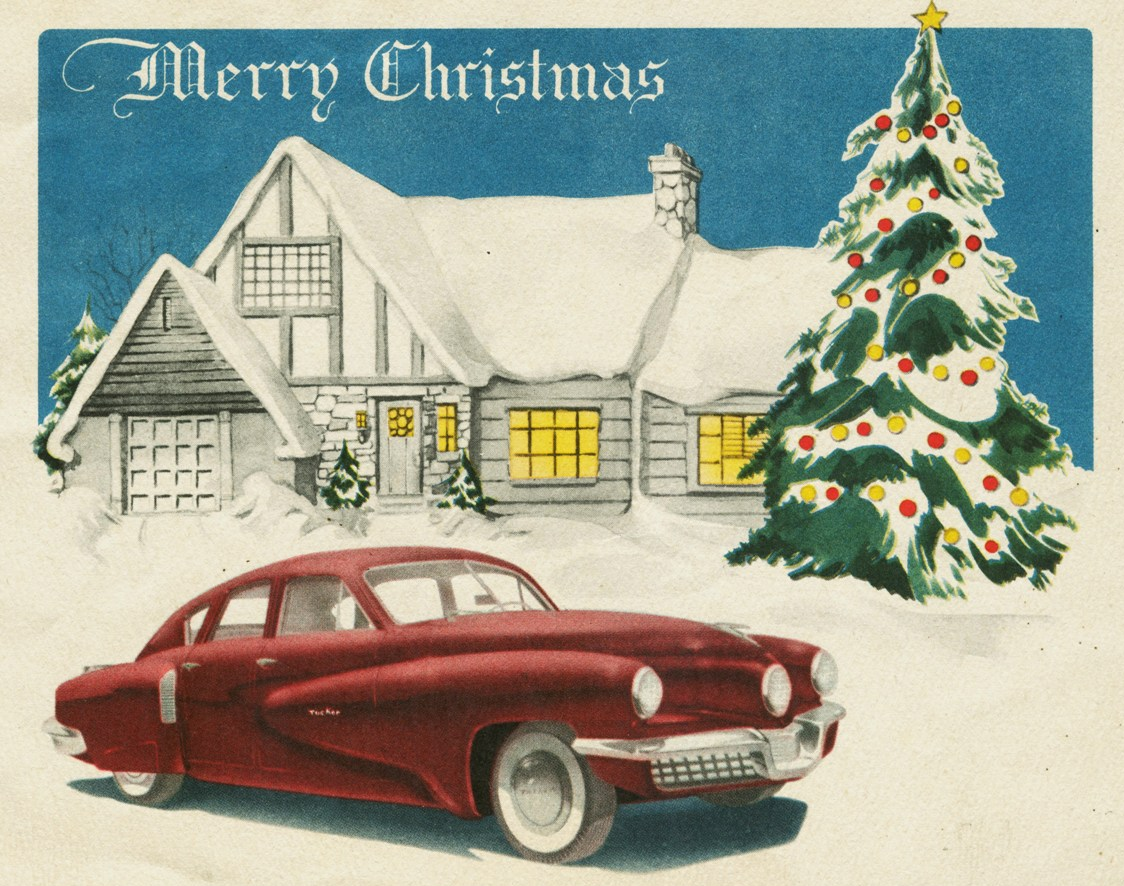
The 1940s and 1950s heralded the Golden Age of Christmas Cards—with styles characterized by nostalgia, family, and traditional holiday imagery. Amidst societal shifts and post-war optimism, colorful cards featuring red-suited Santas, Bethlehem stars, and heartfelt messages became staples.
Famous artists such as Salvador Dali and Norman Rockwell contributed—enhancing the visual appeal. These decades marked a significant evolution in Christmas card designs—capturing the spirit of the times with enduring themes of warmth, joy, and familial bonds.
The Psychedelic 1960s and 1970s
The 1960s and 1970s witnessed a psychedelic revolution that deeply influenced the design and themes of Christmas cards. This era—characterized by a social, musical, and artistic transformation—introduced vibrant, abstract, and non-traditional designs to the holiday greetings landscape.
The psychedelic art movement—born in San Francisco—featured intense colors, free-flowing lines, and kaleidoscopic patterns. Christmas cards embraced these visual motifs—incorporating Art Nouveau-inspired curvilinear shapes and illegible hand-drawn type.
The designs mirrored the counterculture’s rejection of conservative norms—reflecting the era’s spirit of rebellion, free expression, and a quest for spiritual experiences.
The Revival of Traditional Styles
The 1980s and 90s witnessed a revival of classic Victorian designs. Today, holiday revelers can shop for reproductions of iconic vintage Christmas cards online and in stores. The New York Public Library also offers an extensive digital catalogue of well-preserved vintage and antique holiday cards.
As we wrap up this exploration, we invite you to share your affection for vintage holiday cards in the comments below. In doing so, let’s celebrate the magic that these nostalgic designs bring to the happy holiday season—fostering a warm sense of connection and shared memories.
By Anila Hasnain.








